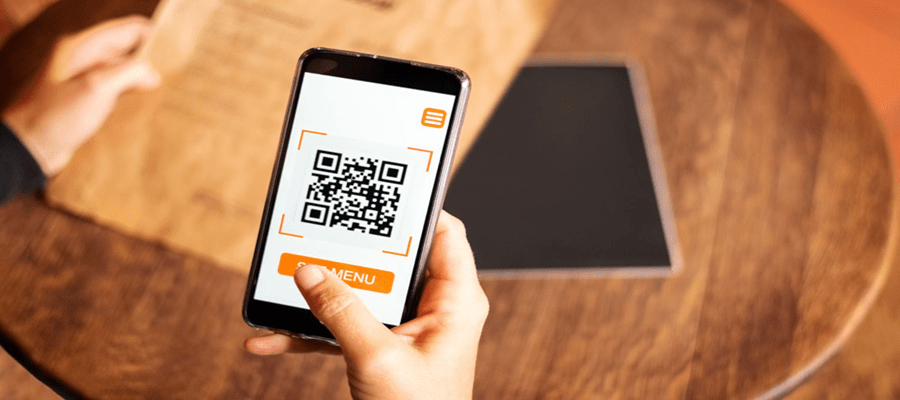
Best Practices for Restaurant Reporting: A Guide for Modern Restaurants
In the fast-paced world of food service, data is more than just numbers—it’s the foundation for smart decisions and sustainable growth. Restaurant reporting, when done right, helps you streamline operations, control costs, and boost profits. But effective reporting isn’t just about collecting data; it’s about tracking the right metrics, analysing trends, and making information accessible to the right people.
This guide highlights six essential best practices for restaurant reporting, with practical tables for easy reference. Whether you run a single outlet or manage multiple locations, these strategies will help you make the most of your data using a restaurant-specific management system like Tavolope.
Guide to Effective Restaurant Reporting Practices
1. Choose a Restaurant-Specific Management System
The first step in effective restaurant reporting is using a platform designed for the unique needs of food service. Generic business software often lacks the features that matter most to restaurants, such as real-time sales tracking, inventory control, and menu performance analysis.
With a restaurant-focused system like Tavolope, you get ready-made modules for:
-
Sales and revenue tracking
-
Inventory management
-
Labour cost monitoring
-
Menu engineering
-
Compliance and audit trails
This saves time on customisation and ensures your reports are relevant, accurate, and actionable.
2. Track Key Metrics Consistently
Not all data is equally valuable. Focus on the metrics that have the biggest impact on your restaurant’s success. Set up automated reports to capture these figures consistently—daily, weekly, and monthly.
Below is a sample table of essential weekly metrics for most restaurants:
|
Metric |
Description |
Frequency |
|
Total Sales |
Food & beverage sales |
Weekly |
|
Average Check Size |
Average spend per customer |
Weekly |
|
COGS |
Cost of goods sold |
Weekly |
|
Labor Cost % |
Labour as % of sales |
Weekly |
|
Inventory Variance |
Difference between usage & records |
Weekly |
|
Customer Ratings |
Aggregated feedback |
Weekly |
By tracking these metrics, you can quickly spot issues like rising costs, declining sales, or inventory shrinkage before they become major problems.
3. Visualise Data for Quick Insights
Numbers alone can be overwhelming. Visualising data makes it easier to understand trends, identify outliers, and communicate findings to your team.
Here’s how different types of data can be visualised for maximum impact:
|
Data Type |
Visualization |
Use Case |
|
Sales Trends |
Line Chart |
Track growth/decline |
|
Inventory |
Bar Graph |
Compare item usage |
|
Labor Costs |
Pie Chart |
See cost distribution |
|
Menu Performance |
Heat Map |
Identify best sellers |
For example, a line chart showing daily sales over the past month can instantly reveal whether your revenue is trending up or down. A heat map of menu items can highlight which dishes are consistently popular and which need to be reconsidered.
4. Set the Right Reporting Frequency
The frequency of your reports matters just as much as the data itself. Too frequent, and you risk information overload; too infrequent, and you might miss critical trends.
Here’s a sample schedule for common restaurant reports:
|
Report Type |
Interval |
Purpose |
|
Sales Summary |
Daily |
Monitor daily performance |
|
Inventory Audit |
Weekly |
Spot waste/shrinkage |
|
Labor Analysis |
Weekly |
Control overtime/costs |
|
Menu Performance |
Monthly |
Refine offerings |
|
Marketing ROI |
Monthly |
Assess campaign impact |
This approach ensures you’re always working with up-to-date information, while also giving you enough data to make meaningful comparisons and decisions.
5. Analyse Historical Data for Trends
Looking at data in isolation can be misleading. Comparing current performance to historical data helps you identify patterns, forecast demand, and make smarter decisions about staffing, purchasing, and promotions.
6. Control and Secure Report Access
Restaurant reports often contain sensitive business information. It’s important to control who can view, edit, or share these reports. A robust restaurant management system allows you to set permissions based on role.
|
Role |
Access Level |
|
Owner |
All Reports |
|
Manager |
Sales, Inventory |
|
Supervisor |
Labour, Compliance |
|
Staff |
Personal Schedules |
This ensures that confidential data is protected, while still giving team members the information they need to do their jobs effectively. Cloud-based systems like Tavolope also enable secure remote access, so managers and owners can check reports from anywhere.
Implementing these best practices with a system like Tavolope transforms reporting from a chore into a strategic advantage. Here’s what you gain:
-
Faster, smarter decisions: With real-time data and clear visuals, you can respond quickly to trends and challenges.
-
Cost control: Spotting waste, shrinkage, or rising costs early helps you take corrective action before profits are impacted.
-
Improved accountability: With role-based access, everyone on your team knows what’s expected and can track their performance.
-
Growth and scalability: Consistent, accurate reporting makes it easier to manage multiple locations or franchises, compare performance, and replicate success.
Conclusion
Restaurant reporting is much more than a back-office task—it’s a daily tool for driving efficiency, profitability, and growth. By focusing on the right metrics, visualising your data, setting smart reporting intervals, analysing trends, and controlling access, you give your restaurant the best chance to thrive in a competitive market.
With Tavolope, you can simplify reporting, empower your team, and make every decision data-driven. Start implementing these best practices today and see the difference in your restaurant’s performance.


